Active
The latest Active breaking news, comment, reviews and features from the experts at T3
Explore Active
-
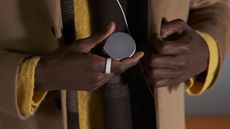
Oura’s new accessory can keep your smart ring powered for weeks
The recycled aluminium case finally solves the smart ring charging conundrum
By Matt Kollat Published
-
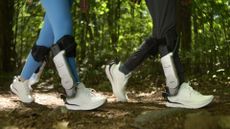
Always wanted jet boots? These bionic boots bring us closer than ever, to go further faster
Strap in and go further with mechanical assistance
By Luke Edwards Published
-

Amazfit’s futuristic food camera looks like a Star Trek communicator and it watches you eat
The V1TAL Food Camera isn’t a product you can buy yet, but it's an exciting concept
By Matt Kollat Published
-

Luna unveils fitness band to rival Whoop - and there's no monthly subscription
The Luna Band promises always-on health tracking and voice-led coaching, with a focus on useful insights not just charts
By Lee Bell Published
-
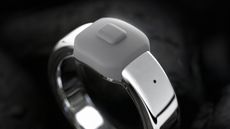
Are AI wearables becoming too curious? The world's biggest tech show seems to think so
At CES, the conversation shifted from step tracking and sleep scores to something far stranger
By Matt Kollat Published
-

RingConn Gen 3 pushes deeper into health tracking with haptic alerts and blood pressure trends
New smart ring nudges wearers with subtle vibrations and promises blood pressure trend insights
By Matt Kollat Published
-

OpenFit Pro could be Shokz’s breakthrough moment for open-ear noise reduction
New headphones blend awareness and immersion, bringing noise reduction, Dolby Atmos optimisation and long battery life
By Matt Kollat Published
-

Merach unveils 'world's first' AI-powered treadmill that changes speed and incline based on your heart rate
Debuting at CES 2026, the LLM-powered tread links up with Apple Watch and starts at $1,199.99
By Lee Bell Published
-
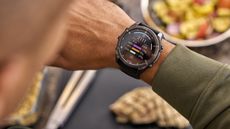
Garmin just built its own version of MyFitnessPal inside Garmin Connect and it could change how you train
Garmin’s new Nutrition feature brings calorie and macro tracking directly into Garmin Connect
By Matt Kollat Published
-

Patagonia’s 'work of art' winter parka is back and it might be the warmest jacket you can buy
A legendary expedition jacket returns to the lineup with premium insulation and thoughtful refinements
By Matt Kollat Published
-
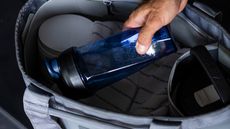
Yeti just signalled its next big move for 2026 and it isn’t about coolers
The new Fitness hub looks small now, but it could change the brand as we know it
By Matt Kollat Published
-

Garmin may be preparing a surprise update for Health Status users
Code inside the latest Garmin Connect update suggests Health Status could soon track more than just your day-to-day readings
By Matt Kollat Published
-
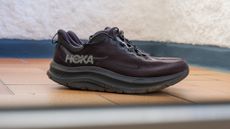
Hoka Kawana 3 review: a hybrid trainer that quietly gets the job done
Not the flashiest Hoka, but its blend of walking comfort, workout stability and fair pricing makes it hard to ignore
By Matt Kollat Published
-
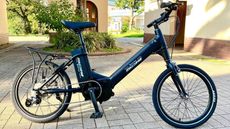
CES just teased the future of e-bikes and it might finally fix range anxiety
Hello Space’s MAG DRIVE system promises pedalling-powered charging without drag
By Matt Kollat Published
-

Jackery’s new ‘Ultra’ power station is built like a tank and finally makes home backup truly portable
The Explorer 1500 Ultra promises extreme durability, fast charging and serious wattage
By Matt Kollat Published
-

This roaming solar robot might be the strangest (and smartest) CES launch I’ve seen this year
Jackery’s Solar Mars Bot looks like a toy, but it’s secretly a roaming home backup system
By Matt Kollat Published
-

AEKE Smart Home Gym review: powerful digital resistance and AI coaching in a fitness mirror
AI real-time coaching and powerful digital resistance mean it’s not just for cardio lovers
By Leon Poultney Published
-
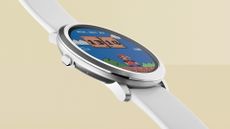
“We’re just building cool gadgets we want to use”: Pebble Round 2 launches as the brand maps a calmer future for wearables
Pebble brings back its iconic round watch while quietly building tools that blend AI, creativity and week-long battery life
By Matt Kollat Published
-
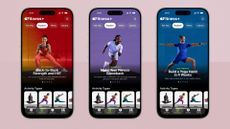
Apple promises easier Fitness+ workouts and better routines in 2026
A fresh set of programs, new music-fuelled workouts and celebrity voices arrive to help users stay consistent this year
By Matt Kollat Published
-

If running isn’t for you, this bodyweight workout is your cardio answer
No running, no kit, no excuses – this workout still boosts your cardio
By Lucy Miller Published
-

The most underrated strength training method is also the fastest
The power of one-set training
By Lucy Miller Published
-

I tried 'posture walking' for a week, and honestly, I feel taller
Why how you walk matters more than how far you go
By Lucy Miller Published
-

Amazfit’s much-hyped budget Garmin rival has built-in music storage and claims three-week battery life
The Active Max looks like a true Forerunner 970 competitor on paper – minus the hefty price tag
By Matt Kollat Published
-
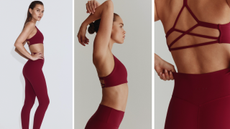
H&M Move unveils its new SculptMove Collection to help you feel confident and move better
Expect smooth, sculpting leggings, sports bras, yoga flares and more
By Bryony Firth-Bernard Published
-

Runners often overlook this bodyweight exercise – but I’ve been using it to get faster
A simple plyometric move that builds power, balance and better running economy
By Lucy Miller Published
-

Bored with basic squats? Try these 5 dynamic variations to train your legs in every direction
Don’t let your squats get stale
By Lucy Miller Published
-

Move over, sit-ups – A world-renowned PT says these 4 standing abs exercises are unrivalled for building deep core strength
You won’t need to sit down (or sit up) for this one
By Lucy Miller Published
-

I did a 'resting squat' every day for two minutes – here’s how it improved my mobility, posture and comfort
This underrated move can boost posture, hip mobility, and even digestion
By Lucy Miller Published
-

Smart glasses are getting good fast and 2026 could be their make-or-break year
Smart glasses are sleeker, smarter and far more capable than the Google Glass days
By Matt Kollat Published
